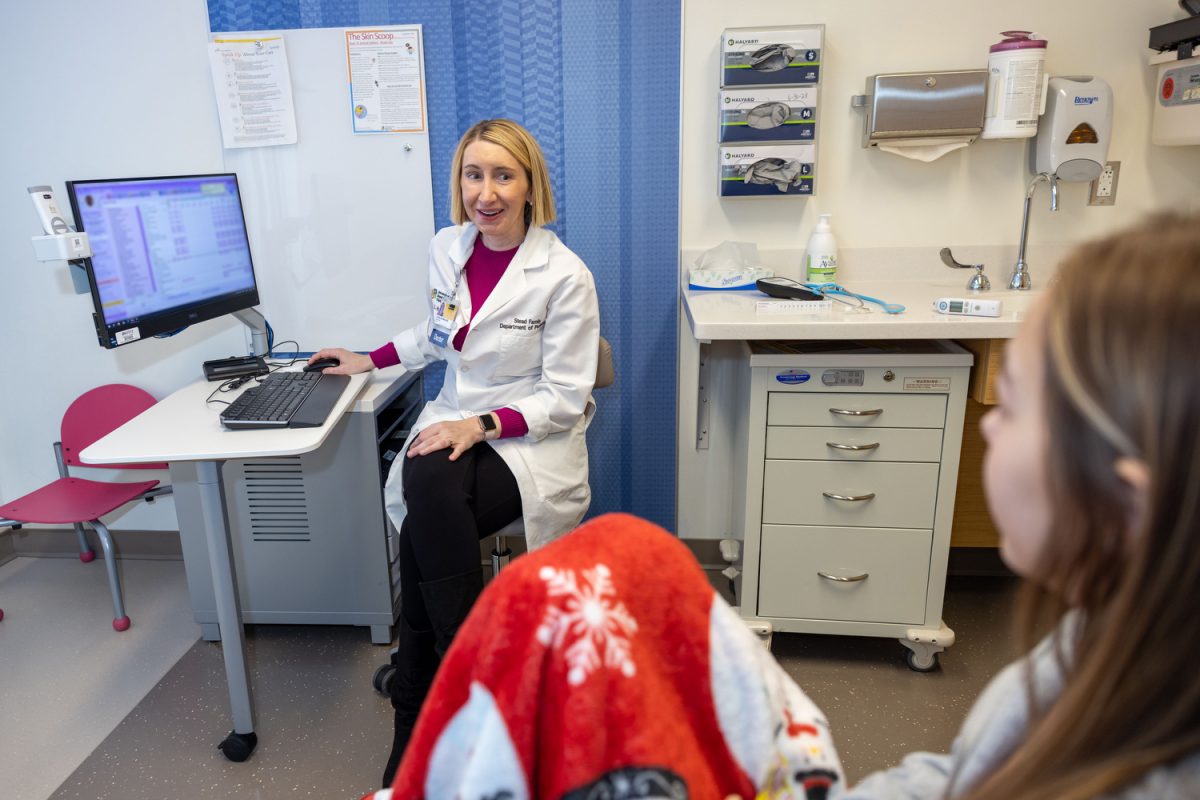As medical practices advance, the health care sector is able to apply new, breakout technologies to its work. The University of Iowa is following this trend, by integrating artificial intelligence into its health care systems.
UI Health Care is consistently evaluating methods to improve both patient care and the lives of its staff. Recently, it has measured the impact of artificial intelligence on its staff and patients.
The hospital aims to reduce “administrative burden” by honing these technologies to assist in managing patient records and clinical documentation, among other issues, according to a release from the Carver College of Medicine.
In the release, UIHC Vice President of Bradley Haws said the hospital’s primary goal is to create the best environment possible for its staff.
“We believe in investing in clinician wellbeing and making sure they have the best tools to do their jobs,” Haws said.
The two new tools that the hospital introduced are Nabla and Evidently. Both were tested in the spring and are now available for clinicians.
Nabla is an AI tool that listens to clinicians’ and patients’ conversations and takes notes. This is significant for clinicians, as it reduces the time burden of writing notes. According to the release, for every hour a clinician spends with a patient, two more hours of desk work are required.
The software is also designed to avoid violating the Health Insurance Portability and Accountability Act, as it does not record the conversations.
The other tool is Evidently, which efficiently manages a patient’s medical records and chart during an appointment. Evidently processes large amounts of patient data and expedites the care process.
The main liaison between UIHC and the two software providers was Jason Misurac, a pediatric nephrologist and associate chief health informatics officer at the hospital. He said Nabla is designed to reduce clinician burnout by lessening their workload.
When Nabla was tested in the spring, Misurac used a test group of 40 practitioners and physicians. He said the reported burnout rates dropped from 69 percent before the tests to 43 percent after.
Around 700 staff members have used Nabla since it was implemented on Sept. 3, Misurac said.
Using Nabla does not mean the burden of notetaking is eliminated. He said there still must be time dedicated to reviewing the notes Nabla generates. Misurac said Nabla still saves time and energy.
“You still need to review it and make sure it’s accurate, but I’d much rather proofread a document than compose it,” he said.
He said Evidently is a beneficial tool for data integration. Pages and pages of patient data are efficiently summarized and presented in an ergonomic user interface for the physician, Misurac said.
“It will generate specific problem-related data displays,” Misurac said. “If you click on the hypertension problem, it’s going to bring up the labs, the medications, and the recent visits that are all relevant to hypertension.”
Misurac said the response to the tools has been positive from staff. Any negative reactions were from those who have yet to explore the new tools in their work.
“We’ve received emails that say, ‘This is a game changer. I’m really excited about it,’” Misurac said.
RELATED: UIHC plans new cancer-focused research facility
Physicians and nurse practitioners are often overloaded by the amount of documentation required during and after patient encounters, he said. Tools like Nabla, though, can cut down the burden substantially.
“Some of our physicians and nurse practitioners are seeing 200 patients per month, and that really starts to add up,” he said. “So, there’s some time savings there.”
Misurac said these tools, unlike other generative AI programs like ChatGPT, do not use the data input during patient care to train their language models. In other words, Nabla and Evidently do not “learn” from UIHC patient data, and patient confidentiality is preserved.
AI has other, newer applications in a hospital setting than what was negotiated with software companies like Evidently and Nabla. Research on the use of AI to track trends in vital signs can be beneficial in health care, Lindsey Knake said.
Knake is a clinical assistant professor of pediatric neonatology, which focuses on the care of newborn babies. Her research focuses on how new technologies can improve care.
Knake said the data generated from newborn babies on ventilators, her primary care focus, is tremendous. She said AI can process the data in a way the clinicians themselves cannot.
“How can the computers help us pick up on these subtle signatures?” Knake said. “That’s where I think AI will be more like augmented intelligence by showing us things that we as humans couldn’t detect.”
Knake said processing the data this way can help make incredibly important decisions.
“We can find patterns that tell us early warning signs or inform other decisions like when should we take the baby off the ventilator,” she said.
Knake said the goal of efficiency in these new technologies is to help reduce the slow, burnout-causing parts of the job, instead allowing clinicians to pay more attention to developing relationships and proper plans of care with their patients.
“I think we’re getting into a new era of medicine, using these tools that will help us be more efficient and reduce the mundane tasks,” Knake said. “I hope we can use these tools to get back to the patient and back to the bedside.”



